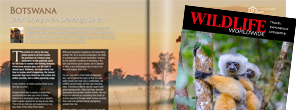This marshy plain in the Rhône delta is a major European birding area. Lying on the flyway from Africa, the Camargue is a haven for many migrant species, and a nesting site for greater flamingos.
Covering an area of over 930 square kilometres, Western Europe’s largest river delta is an immense plain with a series of briny étangs (lagoons) encircled by reeds and marshland, or separated from the sea by sandbars. It lies between the Mediterranean and the two arms of the Rhône River delta – the Grand Rhône to the east, and the Petit Rhône to the west.
Humans have lived here since early times, altering the landscape with drainage schemes, paddy fields and salt pans. To the north the land was drained for agricultural purposes, and cereals, rice and vines are grown. Close to the sea salt has been extracted since prehistoric times – a practice that made the area’s great medieval abbeys wealthy. Nowadays this process has been industrialised.
Around one third, however, is still lagoon or marshland – some of the most natural and most protected land in Europe. The area around the central Étang de Vaccarès has been protected since 1927. The Parc Naturel Régional de Camargue was established in 1970, and later designated a Ramsar "Wetland of International Importance”.
Today the Camargue is home to more than 400 bird species, and its saline ponds provide an ideal habitat – one of the few in Europe – for the greater flamingo. Other wetland birds include white stork, herons, bitterns, glossy ibis, terns and shorebirds such as black-winged stilt; during the winter you can see thousands of ducks, one or two great spotted and white-tailed eagles, penduline tit and moustached warbler, while nearby Mont Ventoux is usually good for citril and snow finches. A further expanse of marshy plain, the Petite Camargue, lies just to the west, while to the east the arid area of La Crau is home to desert birds such as pin-tailed sandgrouse. In the nearby hills of Les Alpilles, you can see Bonelli’s eagle and blue rock thrush.
The native flora has adapted to the salty conditions: sea lavender and glasswort flourish, along with tamarisks and reeds. The marshes are a prime habitat for many species of insects, especially the ferocious mosquitos found here. Semi-wild white Camarguais horses roam the marshlands, along with aggressive Camargue cattle which are reared by local cowboys for export to Spain as fighting bulls.
The region’s geography is in constant flux as the Rhône carries huge quantities of silt downstream. Some lagoons were former branches of the river that have now stopped flowing, and the coastline is pushed outwards by silt deposited at the river mouths. Although these changes have been slowed in recent years by specialised construction, flooding remains a major problem. There are few towns of any size. Arles, the regional capital, lies at the northern end of the delta where the river splits into its two principal branches.
View suggested itinerary










